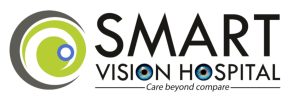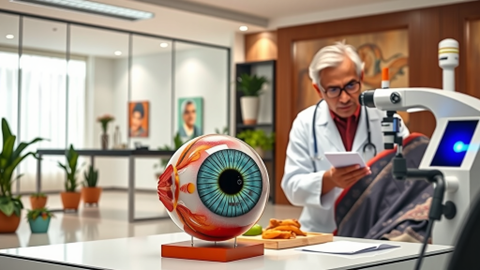Introduction: Unveiling the Silent Threat
Glaucoma is not just an eye problem; it’s a silent thief of vision. Many people are unaware of this condition’s existence until it’s advanced. It is crucial to learn about it since early detection can prevent long-term damage. This eye disease is becoming more common, affecting millions worldwide. As we look into this topic, we see glaucoma as not just an individual problem but a public health issue. Understanding this silent threat can lead to better eye health for many.
What is Glaucoma? A Comprehensive Overview
Glaucoma is an eye condition where the optic nerve gets damaged, leading to vision loss. It often happens due to pressure build-up inside the eye. There are different types, like open-angle, angle-closure, normal-tension, and secondary glaucoma. Open-angle is the most common, occurring gradually and usually unnoticed. Angle-closure is less common but can happen suddenly. Normal-tension glaucoma occurs even without eye pressure increase. Secondary glaucoma results from other medical conditions. Each type impacts the eye differently but all need attention.
Recognizing the Signs: Glaucoma Symptoms
Glaucoma symptoms and signs vary by type, and they often appear late. Early stages may have no symptoms at all. As it progresses, possible signs include blurred vision, seeing halos, and eye pain. Open-angle glaucoma symptoms appear gradually, while angle-closure symptoms occur suddenly, causing severe pain and nausea. Recognizing these different stages underscores the importance of regular eye exams since early detection prevents serious damage.
Why Does Glaucoma Occur? Delving into Causes and Risk Factors
Increased pressure inside the eye, known as intraocular pressure, is a key factor in glaucoma. This pressure damages the optic nerve, causing vision loss. However, not everyone with eye pressure develops glaucoma. Other risk factors for glaucoma include family history, advancing age, and certain conditions like diabetes. Genetic links play a role, as having a close relative with glaucoma increases your risk. Understanding these causes and risks highlights the importance of monitoring your eye health.
Beyond Symptoms: Diagnosing Glaucoma Effectively
Diagnosing glaucoma involves a series of eye tests to ensure accuracy. These comprehensive exams detect the disease even before symptoms appear. Key tests include tonometry to check eye pressure and optic nerve checks to look for damage. Visual field tests determine peripheral vision loss. Glaucoma screening and tests like these are vital for catching the disease early. Early diagnosis offers a better chance of preserving sight. Availability of regular screening options makes it accessible for everyone.
Traditional vs. Modern: Glaucoma Treatment Options Explained
Several glaucoma treatment options exist, ranging from traditional to modern techniques. Traditional methods include eye drops and oral medications to lower eye pressure. They can work effectively for many people when used properly. Modern advancements include minimally invasive glaucoma surgery (MIGS) and Selective Laser Trabeculoplasty (SLT). These newer methods often suit patients depending on the severity of their condition. Personalized treatment choices are essential as they reflect the individual’s needs and disease stage.
A Glimpse into the Future: Cutting-Edge Treatments for Glaucoma
Emerging treatments hold promise for glaucoma patients. Gene therapy is in research phases, showing potential to combat the genetic roots of the condition. Sustained-release medications offer longer relief, reducing the need for daily drops. Artificial intelligence (AI) is becoming a tool for early diagnosis and tracking. There’s also hope for optic nerve repair, creating optimism among researchers and patients alike. These advancements suggest a future where glaucoma may become more manageable and less threatening.
Taking Charge: Prevention, Lifestyle, and Self-Care
Prevention and lifestyle changes can lower glaucoma risk. Regular eye exams are critical for preventive eye care for glaucoma. They help catch any potential issues early. Lifestyle adaptations like maintaining a healthy weight and avoiding smoking support eye health. Exercise moderately, as it’s good for overall health and helps keep intraocular pressure in check. Being proactive with these self-care steps can protect your sight.
The Horizon of Hope: Future Directions in Glaucoma Research
Research into glaucoma offers hope for new treatments. Neuroprotection is a focus, aiming to protect the optic nerve from damage. AI is evolving, helping doctors with fast, accurate diagnostic help. There’s a sense of optimism as current efforts push towards breakthroughs. New drugs and techniques are being tested, promising better management. This ongoing research is vital, suggesting possibilities where vision loss from glaucoma might be preventable.
Conclusion: The Path Forward
Understanding glaucoma can lead to proactive measures. Regular eye check-ups and being aware of symptoms make a huge difference. Advocacy for eye health is essential, not just on a personal level but also within communities. By staying informed and taking action, we can protect our eyes and preserve our vision longer. Regular screenings and embracing medical advancements mark the path forward towards healthier eyes.
Consult us today at Smart Vision Hospital for expert guidance!


